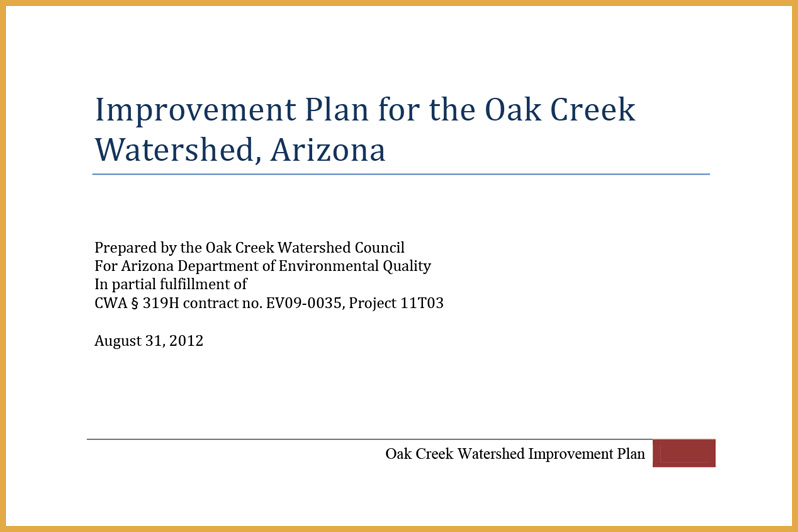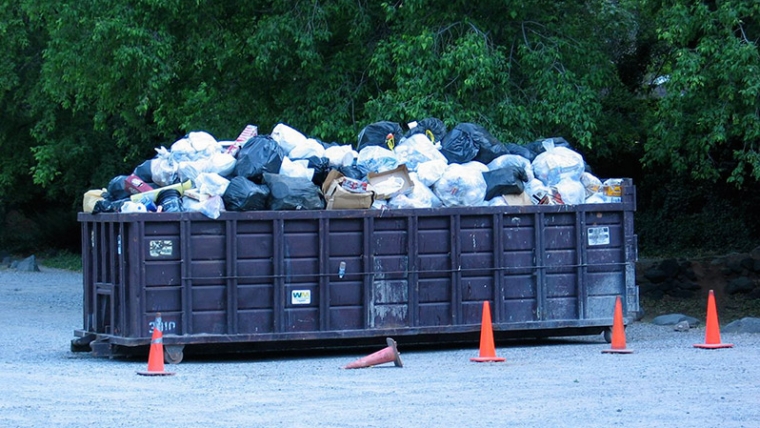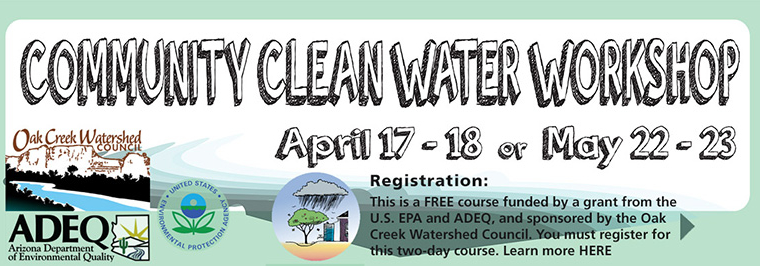Tasks in Developing the WIC, WIP & BMP Implementation
The planning process – from developing a Watershed Improvement Coalition, and subsequent smaller decision-making group, Watershed Improvement Committee (WIC) to developing a Watershed Improvement Plan (WIP) and the implementation best management practices (BMPs) mitigating for E. coli – requires multiples tasks.
As an overview of the planning process, the tasks involved begin with developing a Coalition with broad community and agency representation, and then the Watershed Improvement Committee includes WIC volunteer and education training, a preliminary field survey, reconnaissance field surveys, a septic system risk assessment, social surveys, a financial survey, mitigation project identification and selection, watershed improvement plan development, and Phase II project implementation, effectiveness monitoring and adaptive management. The tasks involved in this process are described in greater depth below:
Coalition and WIC Development
WIC Coordinator, Barry Allan, will coordinate website, radio and newspaper press releases and email blasts announcing the first general meeting. Several sites have been selected for general meetings, including the Sedona Red Rock High School (SRRHS) cafeteria, the City of Sedona Vultee Conference room, and the USFS Red Rock Ranger District conference room. Seventeen entities, representative of public and private sector stakeholders in Oak Creek watershed, have participated in preliminary meetings and expressed interest in participating as members of the Coalition. These entities represent the USDA Forest Service (the primary public land use stakeholder in the Oak Creek watershed), as well as the many private, agricultural and commercial land use and recreational use stakeholders. Our preliminary research has identified Yavapai and Coconino County Health Departments and Flood Control Districts, the City of Sedona, 14 Homeowner Associations (HOAs), 21 resorts, hotels, retreats and bed-and-breakfasts, 12 outdoor recreation tour operators, four federal agencies, five state agencies, four universities, two community colleges, two public school districts and four preparatory boarding schools, as potential candidates for inclusion in the Coalition.
Our intent is to have broad representation on the Coalition by stakeholders and to facilitate dissemination of information and decision-making early in the planning process; hence, the Coalition will be open to all stakeholders but will be governed by the Watershed Improvement Committee (WIC) limited to around 12 members. The WIC will be a consensus-based, decision-making body that takes recommendations from technical advisory workgroups, such that each member of the Advisory has one vote in the consensus process. The WIC, in turn, will direct the Principal Investigator/Project Manager in coordinating the project and in writing the Sampling Analysis Plan (SAP), Quality Assurance Plan (QAP), Watershed Improvement Plan (WIP), and technical portions of Quarterly Reports and the Final Report.
WIC & Volunteer Education and Training
The WIC will be comprised of a diverse assemblage of stakeholders with a range of expertise and knowledge about watershed processes and surface water quality. Consequently, educational presentations from organizations such as Arizona NEMO, MWS, NAU, Arizona Project WET, ADEQ, OCCTF, City of Sedona, etc, will be conducted at the initial meetings and in subsequent meetings as deemed necessary. Topics of presentations may include but are not limited to watershed hydrology, bacterial enumeration, water chemistry, DNA source tracking, potential sources of TMDL exceedance and best management practices (BMPs). Field volunteers will be trained in ADEQ-approved rapid assessment protocol and will conduct the “boots-on-the-ground” site investigations as a coordinated effort. Volunteers for fieldwork and sampling will require both education and training in basic watershed hydrology and stream ecology, sampling protocols and monitoring, including collecting physical and chemical measurements, grab sampling for laboratory chemical analysis and grab sampling for microbial assessments and DNA source tracking. Additional survey training, such as Riffle-Pebble Counts and Proper Function Condition (PFC) Assessments will be determined in collaboration with the ADEQ.
Principal Investigator/Project Manager Rex Bergamini will coordinate and provide oversight on WIC and volunteer education and training and will disseminate and analyze site-specific data collected by volunteers, wth external technical expertise, as necessary. Analyzed data will be submitted to ADEQ for review and comments. Business Consultant Barry Allan will be responsible for communication and Technical Consultant Morgan Stine will provide training support.
Desktop Target Site Identification
The WIC will initially require desktop target site (key, potential remedial and reference sites) identification by developing a spatially-explicit GIS model verified with model-based inference (an iterative, heuristic information-theoretic approach). Principal Investigator/Project Manager Rex Bergamini will lead and coordinate target site identification, with Arizona Non-point Education for Municipal Officials (NEMO) and Northern Arizona University (NAU) College of Engineering and Natural Sciences providing technical support for spatially-explicit GIS modeling and mapping services. Aerial, GIS and topographic imagery, shape files, and land use data will be provided by Coconino County Environmental Services, Yavapai County Environmental Services, and Yavapai Flood Control District to supplement any needs of Arizona NEMO and NAU, with TMDL data provided by the ADEQ. United States Geologic Survey (USGS) soil maps and county soil evaluation records will help identify areas with shallow loams covering alluvial soils, and possibly seasonal saturation, that may transport contaminants or have a high risk of being hydrologically connected to Oak Creek. Identification of irrigation channels and ditches requiring annual cleaning and activation will be facilitated by our collaboration with The Nature Conservancy (TNC). This desktop approach is cost-effective and will facilitate development of working hypotheses and models for targeting sites within the watershed warranting further investigation through reconnaissance-level field surveys.
Preliminary Field Survey
Prior to or during identification of target sites (key, potential remedial and reference sites), we anticipate collecting baseline data in a preliminary field survey or surveys. We anticipate collecting water samples from five (5) sites and analyzing the samples for basic chemistry (dissolved oxygen, pH, water temperature, conductivity, and turbidity), bacteriological enumeration for E. coli using Colilert-18, and DNA source tracking to differentiate human and bovine DNA from other mammalian sources. Preliminary field surveys will be sensitive to meteorologic, seasonal use intensity and other pertinent site-specific variables as defined for the target. Project Manager/Principal Investigator will be responsible for coordinating, implementing and providing oversight on field surveys using multi-meters provided by MWS and EcoRx.
Reconnaissance Field Surveys
Once target sites (key, potential remedial and reference sites) are identified for further investigation, site reconnaissance surveys will be conducted to ground-truth the applicability of and potential for mitigation measures (e.g., identify discharges and/or measure deterioration). In addition, site reconnaissance surveys will be conducted to supplement existing baseline data in support of identifying discharges and potential project sites. As with initial survey efforts, physical and chemical data and water samples in support of chemical analyses, bacteriologic enumeration, and DNA source tracking will be collected. Sampling sites for baseflow and stormwater monitoring will be identified jointly with the ADEQ. Specific details of sampling and analyses will be worked out collaboratively with the ADEQ during development of an ADEQ-approved sampling analysis plan (SAP) that includes a quality assurance plan (QAP). Instruments for field measurements will be provided by MWS and EcoRx, and will include pH, total dissolved solids (TDS), dissolved oxygen (DO), DO percent saturation, air, and water temperature, specific conductivity (EC), turbidity and discharge. Bacterial concentrations will be enumerated for E. coli using the EPA-approved Colilert-18 methodology at the EcoRx laboratory. Dr. Channah Rock at the University of Arizona will provide DNA source tracking services for human, bovine, and other sources. Water samples may be analyzed for major cations and anions, nutrient concentrations (total nitrogen, nitrates, and orthophosphate), nitrogen isotopes, laundry brighteners and/or total and dissolved metal concentrations at the discretion of the ADEQ, with services provided by a state-certified laboratory. Principal Investigator/Project Manager Rex Bergamini will lead and coordinate reconnaissance surveys, with Arizona NEMO and NAU providing technical support. Volunteers will collect data.
In addition to physical, chemical and biological data collection, existing waste treatment and soil absorption systems located within the Oak Creek watershed may need to be assessed for risk and targeted for BMP’s and monitoring. Technical Consultant Morgan Stine will lead the effort for septic system risk assessment, collaborating with the ADEQ in developing the finalized Septic System Risk Assessment document, with review and approval by the ADEQ.
Social Surveys Development
As part of the planning process, social surveys approved by the ADEQ will target specific key audiences, such as landowners and recreational users of Oak Creek. Social surveys will be conducted as part of the planning process and used as a baseline to gauge current education needs and future education needs post-BMP implementation. In addition, comparing survey results between vested stakeholders in Oak Creek versus creek visitors (tourists to recreational areas) may be a way to develop appropriate educational materials and signage, and can be easily accomplished with the cooperation of the numerous tour companies and resort concierges in Sedona. Social surveys will be developed with consultation, review, and approval by the ADEQ.
Financial Survey
A financial survey will be developed to identify potential funding sources and leveraging opportunities for selected and future projects. Barry Allan and Morgan Stine will lead this effort, beginning with researching of donors, sponsors and funding sources and mining the existing Oak Creek Watershed Council database of key contacts (influential people, groups and organizations).
WIP Development
The five (5) potential nonpoint contamination sources of E. coli in Oak Creek that collectively may result in E. coli exceedance of state standards are municipal stormwater, faulty or poorly functioning waste disposal systems, wildlife and livestock, recreational users and agricultural practices. The degree to which sediments are presently serving as either a source or sink of E. coli in the water column has not been determined; consequently, stormwater runoff as both overland and subsurface flow may be a significant contributor to E. coli contamination in Oak Creek, with coliforms sequestered in benthic sediments until disturbed and displaced into the water column by either stormwater-associated scour or recreational users. In the upper watershed, we predict that recreational uses and faulty or poorly functioning waste disposal systems are most critical and addressing recreational uses may mitigate for wildlife-dependent impacts associated with streamside trash. Discussions with ADEQ TMDL Unit Supervisor Jason Sutter (pers. comm., 04 November 2008) and the results of a septic system risk assessment conducted in 2002 suggest that recreational uses and on-site waste disposal systems may be significant anthropogenic causes of E. coli exceedance. In the middle and lower watershed, municipal stormwater, agricultural practices, and increasing development appear to be most critical; hence, in the lower watershed, we define critical areas for targeting based on existing land use and proximity of older homes to Oak Creek (see Appendix C for risk assessment criteria). A general strategy may be to capture E. coli carried by stormwater overland flow by sequestration in sediment traps prior to reaching Oak Creek. This approach will lower E. coli and other fecal coliforms and concomitantly reduce sedimentation in Oak Creek.
The WIP will identify and prioritize projects that will efficiently and cost-effectively reduce impairments by E. coli bacteria. Criteria for project selection will be determined by the WIC and reviewed and approved by the ADEQ, and may include but are not limited to consideration of the potential for load reductions, costs, complexity, implementability, maintenance, site access and potential for citizen participation and potential for long-term interest. Development of the WIP will be by Principal Investigator/Project Manager Rex Bergamini.
Project Selection
Once the WIP is completed, an on-the-ground water quality improvement project will be selected, submitted to ADEQ for review and approval, and implemented as Phase II. This project may involve septic upgrades, mitigating for livestock degradation, agricultural inputs or recreational users. Oversight of the project selection process will be provided by Principal Investigator/Project Manager Rex Bergamini in collaboration with the ADEQ.



